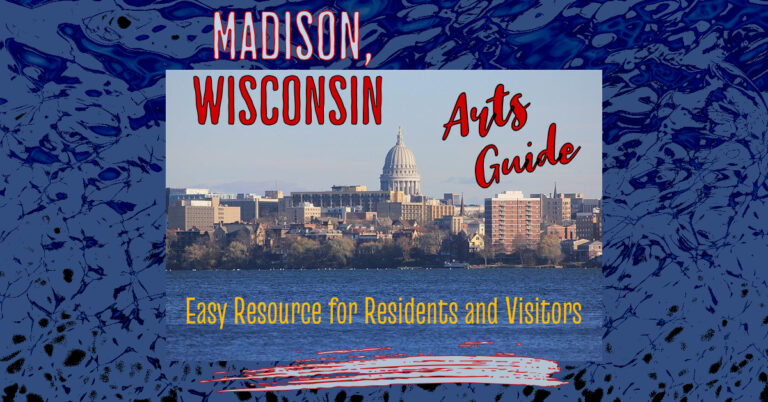Cities Towns Villages Places
From cities to towns to villages to other places…
How do we categorize all the diverse places where people live?
What qualifies a place as a city? How big is a town? What is a megalopolis? How about a hamlet? This post is about how we categorize various places, typically human settlements.
Human settlements can be:
- art towns
- college towns
- ecovillages
- gateway communities
- farm settlements
- global cities
- port cities
- remote villages
- resort destinations
- tourist destinations
- university cities
Zoom in and we discover interesting places inside the bigger settlement: entertainment districts, ethnic enclaves, famous streets, gay villages, hipster neighborhoods, historic districts, tiny house villages, urban parks, underground cities…
And much more!
What is a settlement?
A settlement is a community where people live (or have lived). A settlement is also called a locality or a populated place. Cities, towns, and villages are common examples of places that are settlement but not the only examples.
(Source: Wikipedia’s Human settlement page)
Human settlements are often divided into two overarching categories: urban and rural.
Key characteristics of an urban area:
- high population density
- infrastructure of built environment
Typical characteristics of a rural area:
- located outside towns and cities
- low population
- small settlement

From tiny village

To urban giant

We inhabit many types of human settlements.
City and Town Characteristics
“City” and “town” are common, familiar terms used to describe places. Here’s a summary of their typical characteristics:
City
- Large human settlement
- Typically offers abundant services (housing, transportation, etc.)
- High density
- Common populations range between 1,500 to 50,000 people but there is not a strict rule.
- Cities serve as administrative, commercial, religious, and cultural hubs for their surrounding areas.
(Source: Wikipedia’s City page)
Town
- Usually larger than a village but smaller than a city
- The people in a town tend to make a living from manufacturing industry, commerce, and public services (rather than fishing, farming, mining, etc.)
- The criteria to distinguish towns from other settlements varies throughout the world, and it depends on more than just population size.
(Source: Wikipedia’s Town page)
Categorization Guidelines for Places
Cities, towns and villages are places we can define and categorize. So are metropolises and giant conurbations. On a smaller scale, we have hamlets, or little neighborhoods. How do we decide what it is what?
What are the criteria?
To determine the right category for a place, consider the entirety of the place including its context and its influence. It’s about how everything comes together.
There is not an easy rule book for defining places but there are plenty of guidelines to work with.
Here are some factors that influence how a settlement is categorized:
- Population
- Population density
- Number of dwellings
- Economic function
- Infrastructure
- Services provided
- Symbolic status
- Administrative division (see below)
Defining places is not a precise science. For example, different countries have different definitions of the population size required to make a place “urban.”
Here’s another example: an official “city” can be smaller than an official “town” because of how it functions or because its government-awarded status.
(Source: ThoughtCo article – “The Difference Between a City and a Town“)
What is administrative division?
To sum it up briefly, “administrative division” refers to a defined geographical location with a defined level of autonomy. Administrative divisions usually manage themselves to some degree through local government.
There are different administration division levels. For example, in the United States:
- A state is first-level administrative division
- A county is a lower level administration division than a state
- Administrative division tiers continue, and they extend to cities, towns, townships, and so on
(Source: Wikipedia’s Administrative division page)
Conclusion
With all things taken into consideration, people tend to agree on the labels for places. There’s a little room for flexibility and there are useful guidelines.
Places – Smaller Than a Town

Village
(Source: Wikipedia’s Village page)
- Usually larger than a hamlet but smaller than a town
- Population is likely to range from a few hundred to a few thousand
- Often located in rural areas. However, there are urban villages too.
Hamlet
(Source: Wikipedia’s Hamlet (place) page)
- Small human settlement
- Small population
- Likely to be smaller than a village, but there are different guidelines throughout the world
- Provides few or no services to residents
Major Cities and Urban Groupings

Megalopolis
(Source: Wikipedia’s Megalopolis page)
- Chain of roughly adjacent metropolitan areas (merged/continuous or somewhat separated)
- Sometimes called megapolis, megaregion, or supercity
- Example: The Great Lakes Megalopolis includes many metropolitan areas, extending across multiple states in the United States to Canada. (I live in this Megalopolis.)
Conurbation
(Source: Wikipedia’s Conurbation page)
- A region of a number of cities, large towns, and urban areas
- Population growth and physical expansion has caused them to merge to form one continuous urban or industrially developed area
- Example: The San Francisco Bay Area is a conurbation that combines the metropolitan area of San Francisco, as well as Oakland, San Jose, and other minor urban centers.
Global City
(Source: Wikipedia’s Global City page)
- Key city in world economy
- Also called world city, alpha city, or world center
- A global city will be a megalopolis (but not all megalopolises are global cities)
- Example: London, England is a global city.
Megacity
(Source: Wikipedia’s Megacity page)
- Population is typically 10 million people +
- Can be a single metropolitan area or 2 + metropolitan areas converging
- Example: Tokyo, Japan is a Megacity
Metropolis
(Source: Wikipedia’s Metropolis page)
- Can be a large city or conurbation
- Significant economic political, and cultural center for a country or region
- Hub for regional/international connections, commerce, and communications
- Example: Buenos Aires is the principal metropolis of Argentina.
Metropolitan area
(Source: Wikipedia’s Metropolitan area page)
- Includes not only the urban core but also the less-populated surrounding areas
- Can include one or more urban areas
- Example: The San Diego-Tijuana metropolitan area extends into both the United States and Mexico. (It is also a metropolitan conurbation.)
Culture Categories for Places
Another way to categorize a place is to emphasize cultural elements.
Many factors can influence a place’s culture. Here are just a few that come to mind: artistic influences, available resources, ethnic makeup, geography, history, politics, religious influences, major industries, and major institutions.
A few examples of culture categories:
Art Town/City
- Art is a central feature to the cultural identity
- Two examples:
- Santa Fe, New Mexico
- Florence, Italy
Music City
- A place with a vibrant music economy
- Two examples:
- Nashville, Tennessee
- New Orleans, Louisiana
College Town/University Town/University City
- The college or university presence strongly influences the environment and community
- Three examples:
- Bloomington, Indiana
- Madison, Wisconsin
- Oxford, England
Zooming in:
Neighborhoods, Streets, Plazas and Parks
These places – neighborhoods, streets, plazas, and parks – are not settlements. However, these sections within settlements can be exciting places where culture, character, and identity shine.
Neighborhood
- Not settlement but a specific locality and community within a settlement.
- Example: Wicker Park is a neighborhood in Chicago, Illinois.
Street
- Streets and roads are not quite the same. Both are used for travel but a road is primarily for transportation. Streets are more likely to include pedestrians, street cafes, or public places where people interact. Streets are in a built environments. A road is more likely to extend beyond a town, city, etc.
Plaza
- A plaza, or city square is an open place where people can gather. (I fondly remember the plaza below from a year I spent in Salamanca, Spain.)

Park
- Parks are typically public green areas where people might walk, rest, enjoy nature, or find recreation (e.g. playgrounds).

Keep exploring
Thank you for reading this post!
From here, there is much more to learn about cities, towns, villages, and places of all kinds.
And if you want to find categories beyond what was covered on this page, here are some links:
Published on February 27, 2023



